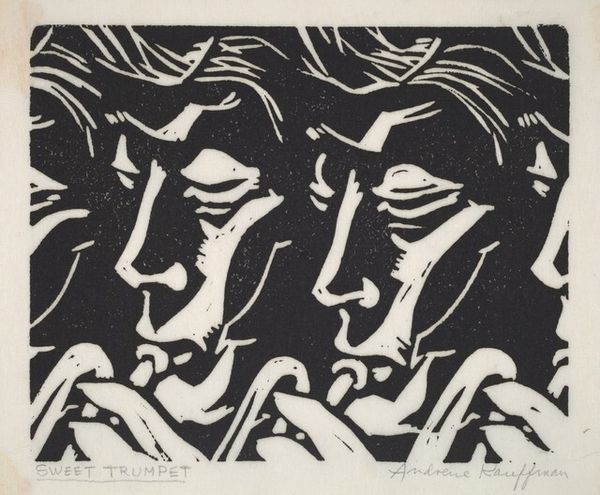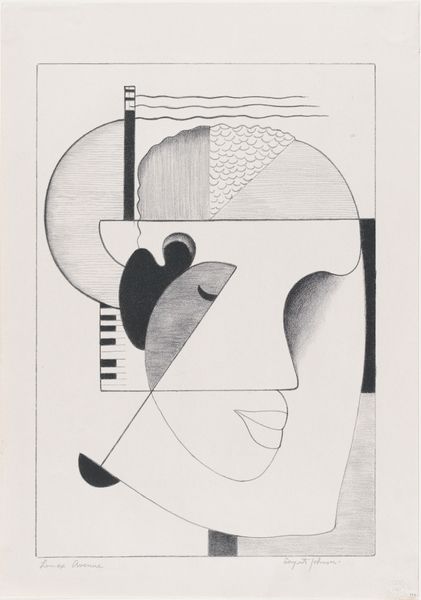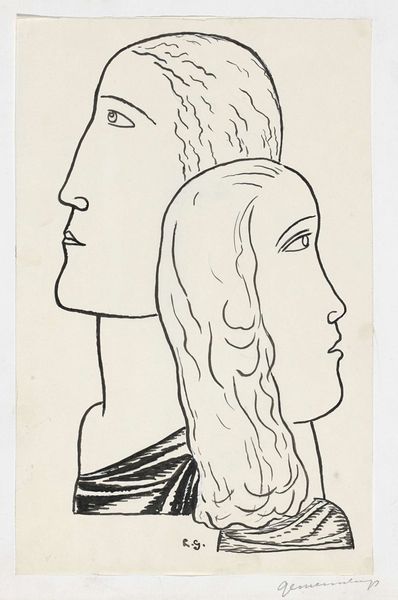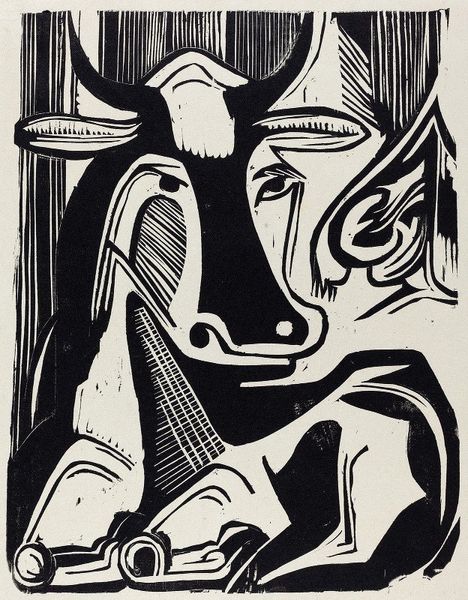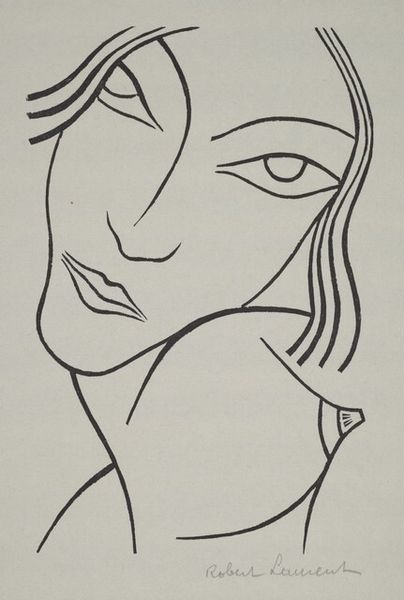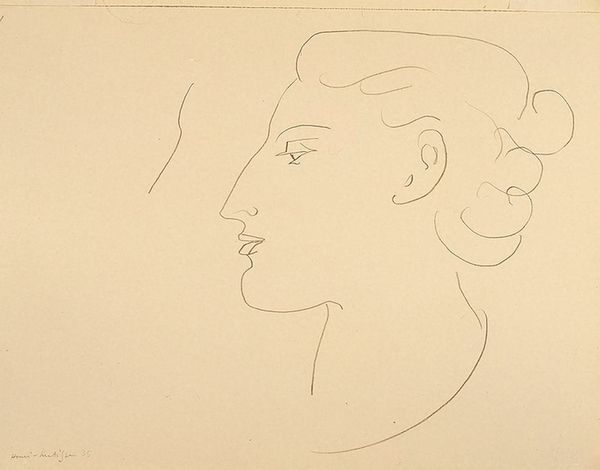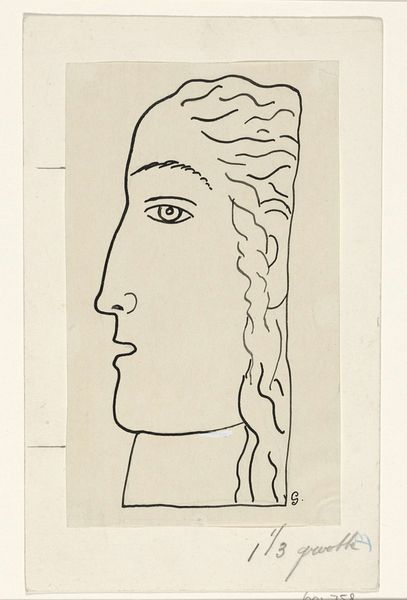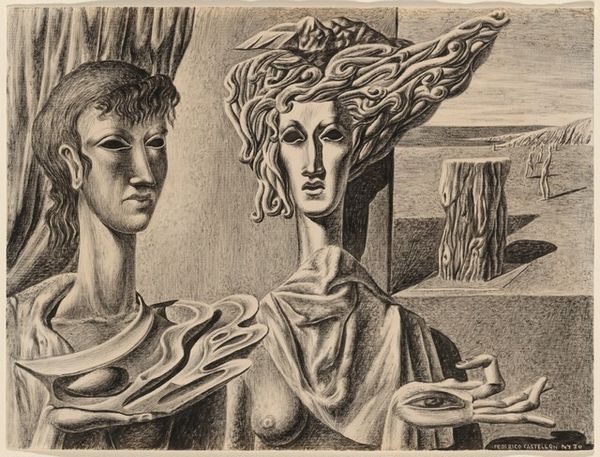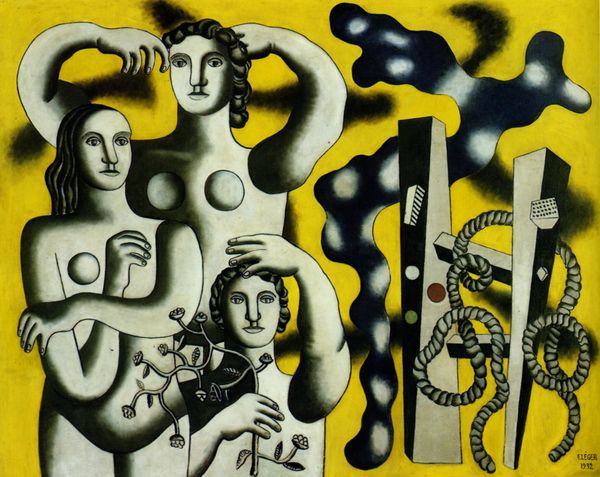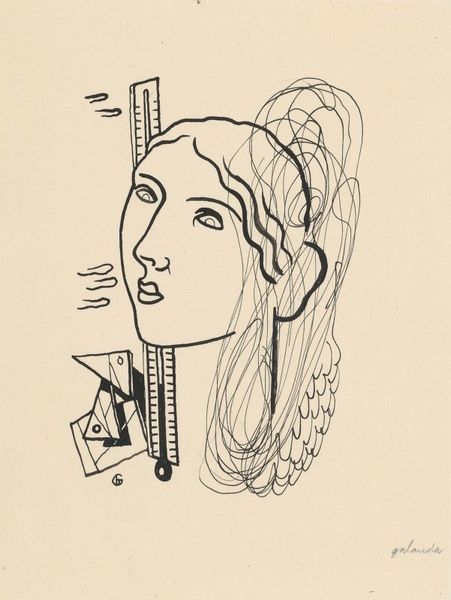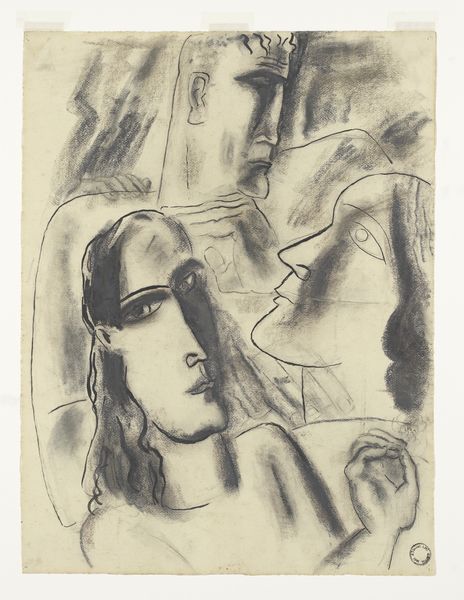
drawing, print, graphite
#
portrait
#
art-deco
#
drawing
# print
#
caricature
#
form
#
geometric
#
abstraction
#
line
#
graphite
#
modernism
Dimensions: image: 241 x 302 mm sheet: 380 x 456 mm
Copyright: National Gallery of Art: CC0 1.0
Curator: This graphite drawing, aptly titled "Sonata," was created around 1934 by Harold C. Swartz. Its monochromatic palette and strong lines immediately evoke a sense of art deco elegance. What's your initial take? Editor: An arresting stillness. Despite the sharp, geometric forms, the image feels melancholic, almost frozen in time. The faces lack dynamism, as if they carry the weight of an unspoken history. Curator: The geometric shapes are fascinating; they seem to break down traditional notions of portraiture. Swartz appears to use these forms to build not just a likeness, but an atmosphere of detachment. Do you think the geometry clashes with or enhances the portraits? Editor: I believe that contrast is intentional. The softness of the shading, which gives a realistic impression, is undermined by the sharp-edged cubist-style treatment, so the underlying critique might be related to representation and the limitations placed upon those figures, their bodies acting as subjects. What symbolism can we glean? Curator: Consider the title: "Sonata." The implied musicality could signify harmony or disharmony. Perhaps Swartz is suggesting that these figures, despite their formal separation and geometric constraints, are intertwined in some intricate composition, akin to a musical piece with movements and variations. Editor: Absolutely. Given the social upheavals of the 1930s, particularly gender constructs and limited representation, there might be commentary imbedded in this "Sonata." Perhaps a visual response to constrained feminine identity, reflected in the faces that show restraint? Curator: That resonates. There's a subtle yet strong sense of psychological weight to the work that perhaps links those personal feelings to broader socio-political contexts. Swartz may not only depict likeness but reveal an emotional tension through form. Editor: I agree; Swartz offers us not just aesthetic experience but prompts us to confront representations and identities. His angular interpretation asks viewers to look closely not just at "who," but "how" someone appears in public perception. Curator: It has been a very insightful experience! Thank you! Editor: A fruitful consideration of silence!
Comments
No comments
Be the first to comment and join the conversation on the ultimate creative platform.
